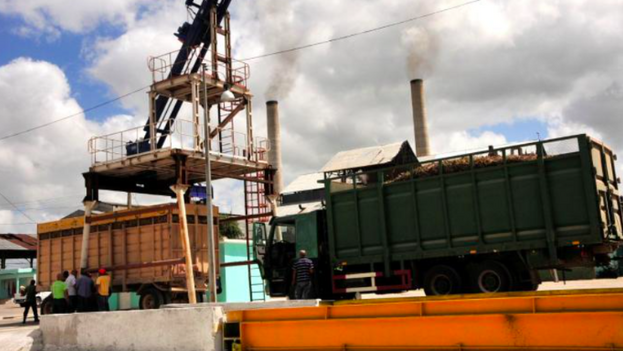
![]() 14ymedio, Havana, 1 November 2022 — The directors of the Azcuba company revealed this Monday to the State newspaper Granma what they plan to do with the “sleepy” mills during the next harvest. Only 23 factories throughout the country, of the 56 that could operate, will be responsible for the production, from this November, of the 455,198 tons of sugar planned.
14ymedio, Havana, 1 November 2022 — The directors of the Azcuba company revealed this Monday to the State newspaper Granma what they plan to do with the “sleepy” mills during the next harvest. Only 23 factories throughout the country, of the 56 that could operate, will be responsible for the production, from this November, of the 455,198 tons of sugar planned.
However, the mills that don’t grind this year “will not be dismantled,” said Dionis Pérez, communications director of Azcuba. In a long report, the Communist Party newspaper once again recognizes the “moderate” dimensions of the next harvest and justifies the Government, which seeks to “maintain stable production” with the little funding it will allocate to cane production.
The harvest will not even come close to the figure demanded by Cuban consumers — about half a million tons of sugar — and it is expected that it will be destined mainly for export and tourism. What is left over will cover the ’family basket’ (the allocation through the ration program).
With Granma’s article, Azcuba warns the workers of inactive sugar mills about what they must do to justify their salaries: “Repair, maintenance and conservation work,” Pérez summarized, “for which funding is available.”
A part of the budget allocated to the harvest will be diverted to the inoperative factories, which doesn’t rule out “the risks of dismantling machinery” due to some unforeseen planning.
“The workforce will be maintained,” the official clarified. “One part will participate in the conservation and preservation of the refinery, and another will be incorporated into the maintenance and repair work, after the authorization of funding for these activities.”
Pérez resorted to euphemisms and circumlocutions to mitigate the helplessness in which the workers will remain. In case of any doubt, he referred to the “93 measures to save the national sugar agro-industry” drafted by the Government.
It’s not clear how the “relocation” of sugarcane personnel will be organized or which workers are promised “sources of personal income” in the production of sugar-derived foods. In addition, the authorities promise to hire them as workers in the “construction of 447 homes, mostly in sugarcane communities,” and will offer them employment in the “rescue and commissioning” of about thirty carpentry shops and warehouses linked to the sugar mills.
The plan foresees the delivery of 141,905 acres of land to sugar companies in the future, destined for the preparation of the next harvest, but it didn’t specify when it would happen. This is just a “projection.”
In the absence of work in this harvest, there is no choice but to concentrate on the next one, that is, “planting cane and food,” says the official, who presents Azcuba’s decisions as a “strategy” for the creation of more stable “work collectives.”
Granma dedicated a good part of its report to the words of Dionis Pérez about the tasks carried out by the inactive Uruguay sugar mill, known as the Colossus of Jatibonico (Sancti Spíritus).
The Government “had decided that there would be few inputs and little financing to repair the mill. We were only going to do conservation work and repair some lines of the equipment,” said Eddy Gil Pérez, director of the plant.
Of the 424 workers employed at the Uruguay mill, 180 are today engaged in minor repair work and 101 in miscellaneous activities of painting or construction. The idea was, according to the manager, that everyone would be left with “some work tie” and within the sugar sector. The money to pay those salaries comes from a bank credit that must be repaid within the impossible two-year period. Even so, only 80% of the payments have been covered.
“Next year, the State will grant us a credit for the concept of a ’paralyzed factory’,” says Gil, who expects 15 million pesos from state banks for the Uruguay mill to resume its work in 2023.
The “dead time” of the Cuban sugar mills will be extended until next year, without there being good reasons to expect a change in their infrastructure. The deficiency in the organization of the harvest translates into unemployment, instability and more debts for the Cuban sugar industry, which was once the first in the world.
Translated by Regina Anavy
____________
COLLABORATE WITH OUR WORK: The 14ymedio team is committed to practicing serious journalism that reflects Cuba’s reality in all its depth. Thank you for joining us on this long journey. We invite you to continue supporting us by becoming a member of 14ymedio now. Together we can continue transforming journalism in Cuba.
